Watoya - A Guesthouse Only Ninety Minutes Away From Tokyo

Watoya is a guesthouse located ninety minutes away from Tokyo by car. Guests can experience the old Japanese style of life, such as using a traditional cooking stove in this great, comfortable accommodation.
Ninety Minutes Away from Tokyo
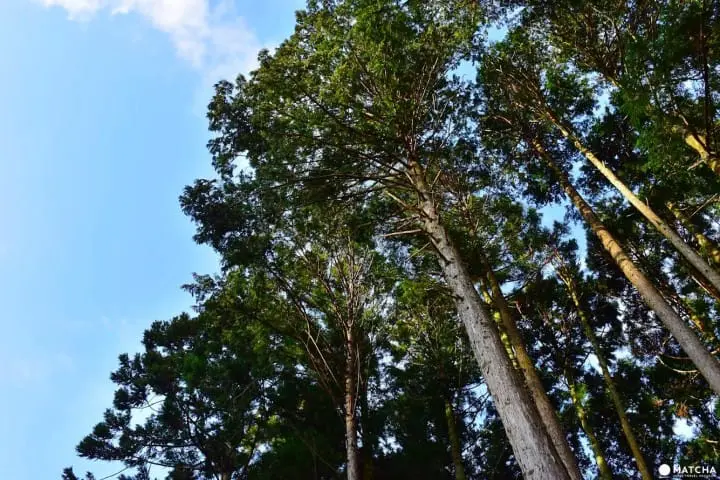
From Tokyo, it takes two and a half hours by train to Otaki-machi, located in Isumi, Chiba prefecture. This is a verdant area, as seventy percent of Otaki-machi is covered by trees. It is also a ninety-minute car ride from Tokyo to this area, so Otaki-machi can be accessed easily.
This article is about a guesthouse offering an old-style Japanese life.

The name of the guesthouse is Watoya. It opened in 2015, but the building used to be an old traditional house, with a modest exterior, built more than a hundred years ago.
It is located on top of a hill, a ten minute car ride from the nearest train station. Both Japanese and international visitors come to this guesthouse.
They are drawn by various activities that can be experienced only at Watoya, such as cooking rice on a kamado (*1), a traditional bath and canyoning, all of which are rarely seen in modern Japan.
MATCHA stayed at Watoya for a night, to experience these activities.
*1 Kamado: A traditional Japanese cooking stove.
A Hideaway
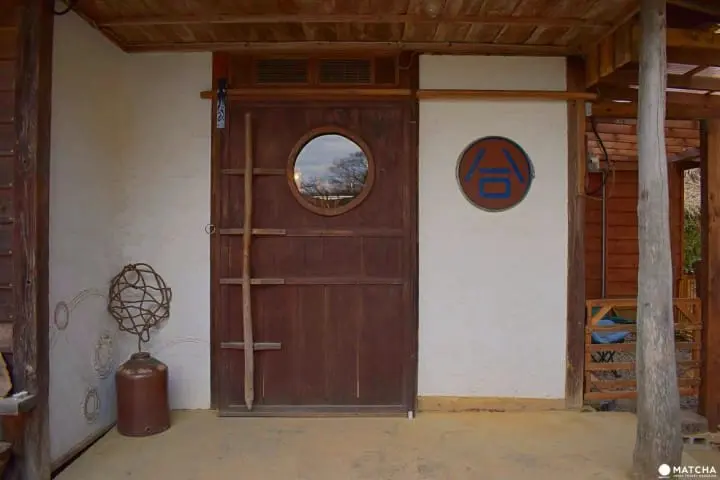
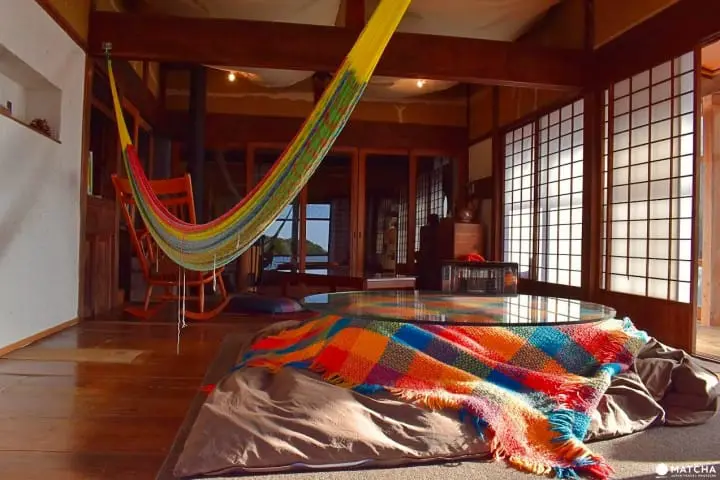
Open the heavy wooden door, and you might feel like you've wandered into a hideaway. Watoya is an old private house renovated into a guesthouse, and the interior is playfully designed.
This room, where the colorful kotatsu and a hammock catches the guests' eyes, is a common space. It is a living room for the guests to relax, and also has a fireplace, complete with firewood to be used in winter.
After checking in, the guests are given a lecture about the facilities by Kazu-san, the owner. English pamphlets are available, so don't worry. After the lecture, the guests will be taken to their rooms.
A strange wooden stairway appears before the guests.
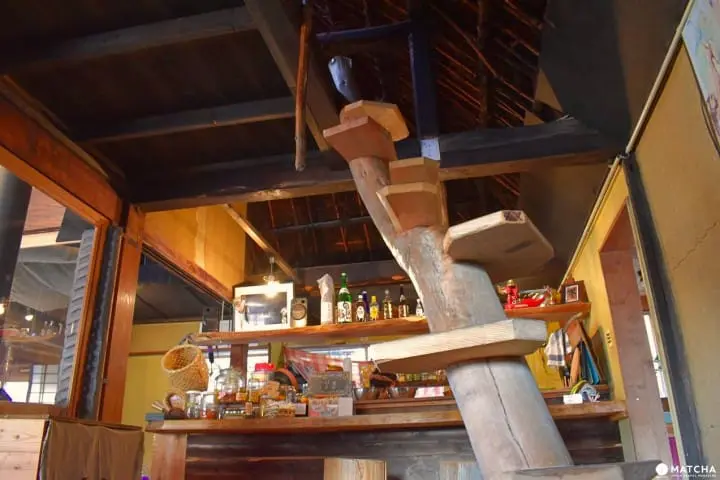
And it leads to...
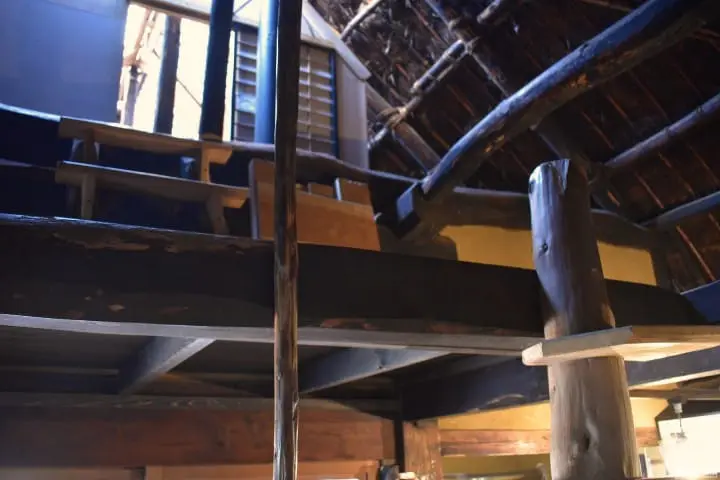
... a tree house, built into the attic.
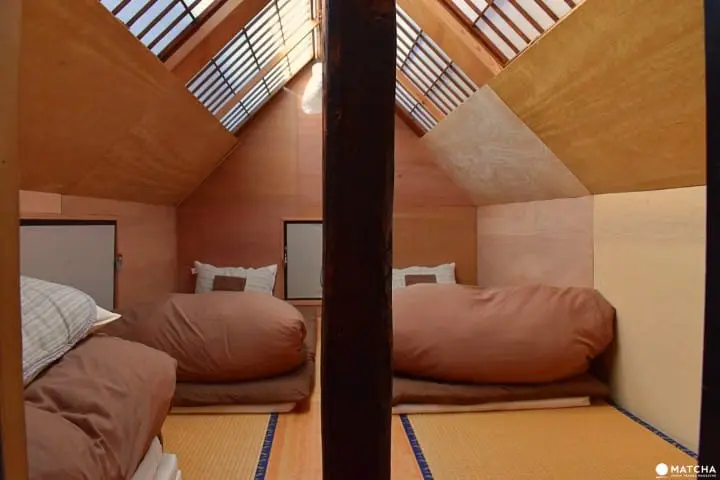
Three people can stay in the tree house. There is no air conditioning, but with the warm air from the common space below, the guests won't feel the cold.
Watoya also has a dormitory room for six people, and an annex room for three people.
An Outdoor Playground
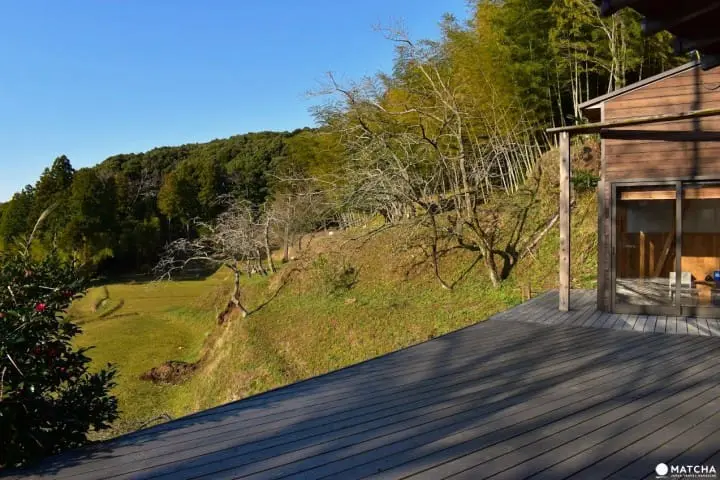
Watoya has outdoor appeals as well.
There is a spacious wooden deck outside the common space. In the warm weather, guests can enjoy drinking coffee on the deck, and Mt. Fuji can be viewed afar on a clear day.
We got down from the deck and followed Kazu-san...
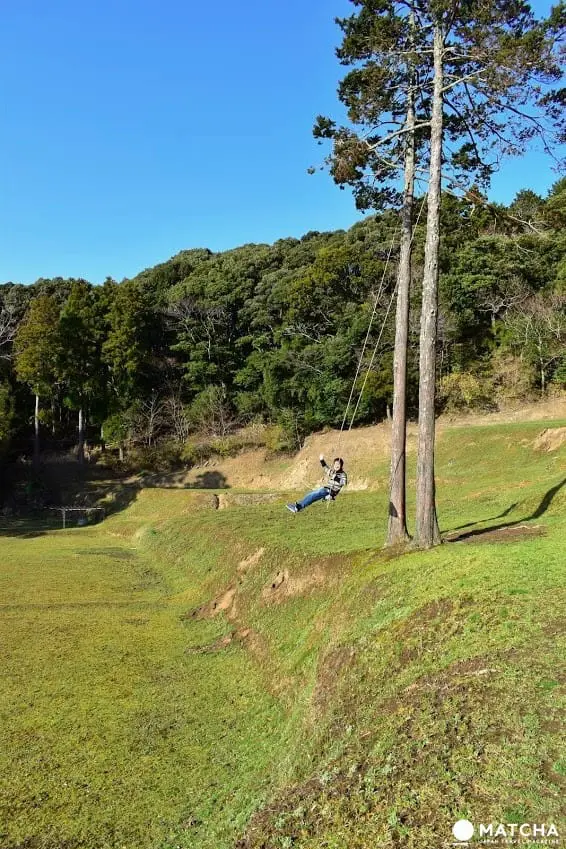
... to find a huge swing between two tall trees! It is a thrilling ride, and was made by Kazu-san, along with his friends.
Starting a Fire: The Old Japanese Style of Life
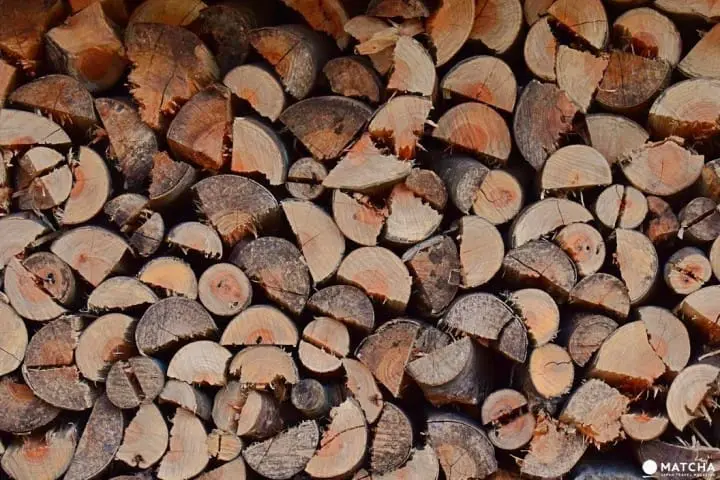
"Let's chop some firewood." Kazu-san called out to the guests.
At Watoya, guests can use the kamado, and bathe in a unique bath. But they have to start a fire for these activities.
Chopping Firewood with Vigor
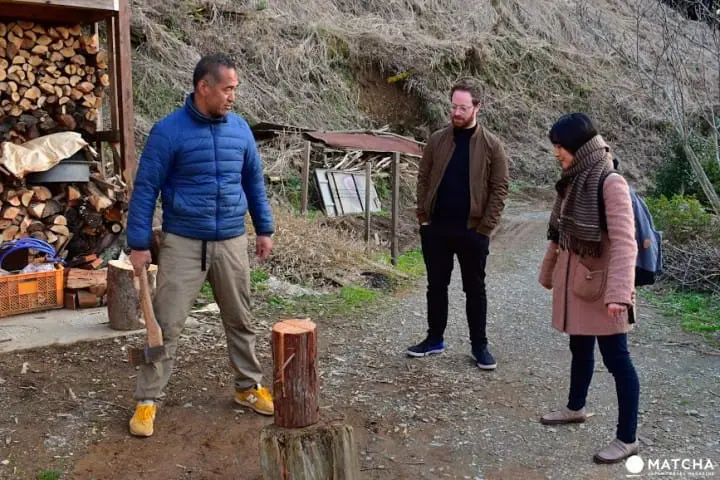
Kazu-san, holding an axe in the photograph above, gave a lecture to the guests.
The point is to stand with the feet apart at shoulder length, and swing the axe straight down.
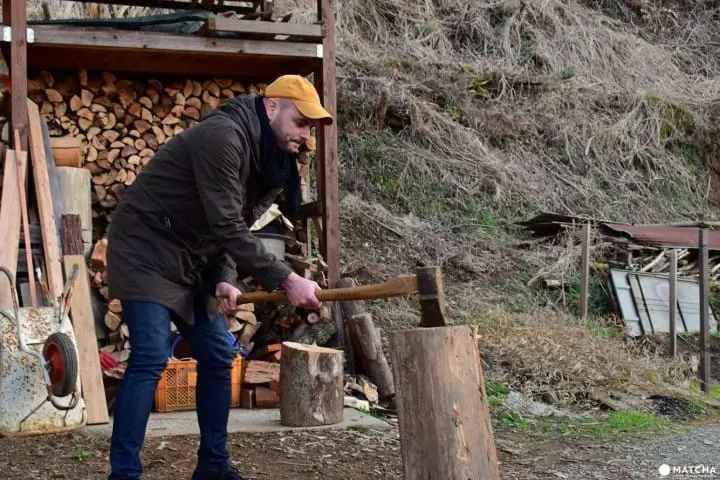
It is difficult to chop the wood in a single stroke, and must be repeated multiple times. The axe is heavier than it looks, so this is hard work.
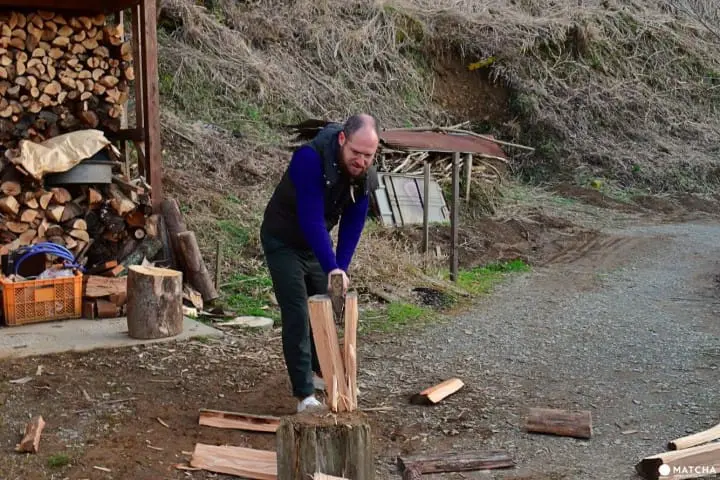
All the guests seemed to get the hang of it quickly, and the firewood began to pile up. The temperature was low on the day of our stay, but we soon got warm with this activity.
Heating Up the Big Bath

After chopping the firewood, we got the bath ready.
The photograph shows a traditional Japanese bath called goemon buro. The water in the huge tub is heated by the fire below. You don't see this type of bath very often.
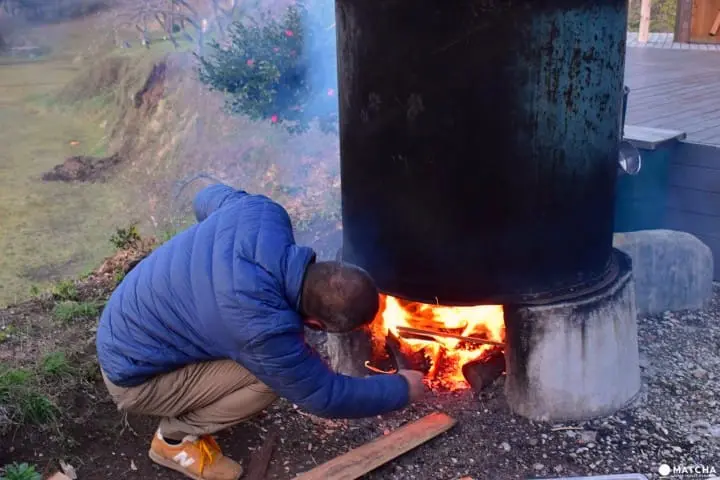
The wood chopped by the guests is added to the fire under the tub. Due to the size of the tub, it takes about two hours for the water to be heated. The fire has to be checked once in a while, and the wood has to be added to keep the blaze high.
Cooking Rice on a Kamado

While waiting for the water to heat up, we started cooking rice.
Nowadays, most Japanese use a rice cooker, but a kamado is used at Watoya. It takes some time, but the fragrance and the flavor of the rice is completely different.
We chopped some more wood, and started a fire. The blaze must be high for the first twenty minutes, and low for the next twenty minutes. The rice will be ready in about forty to fifty minutes.
Kazu-san said, "To decide the best timing to eat, you have to watch how the smoke rises and listen to the sound from the pot."
While watching the blaze and adding wood, it feels like you're having a conversation with rice. The goemon buro has to be checked as well, so the guests will be quite busy.
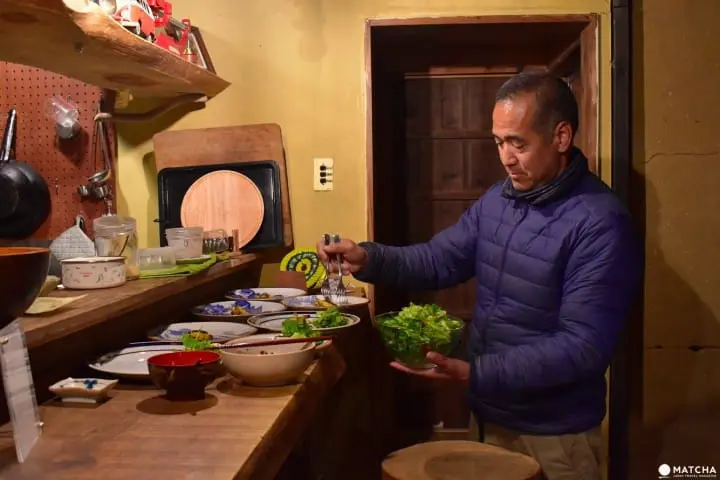
Kazu-san talked about his life while preparing the dinner.
"In this kind of life, you appreciate how valuable fire is. The same with water. By chopping wood and starting a fire, you will come to realize those things."
Before Kazu-san opened Watoya, he traveled around the world for twenty years as a diving instructor and a tour guide.
But he started to wonder if there may be another way of life, and in 2011, the Great Eastern Japan Earthquake occurred.

"Even if you are wealthy, an earthquake or a disaster can wipe it out. But if you have water, firewood and rice, you'll be able to live on your own. I decided to grow rice, in order to live on my own."
So he moved from Tokyo, where he was living, to Otaki-machi. The rice in the pot was grown by Kazu-san, on his own rice paddy.
"I want little children, and their parents, to have the power to live on their own. I hope Watoya can be a place to experience that kind of power."
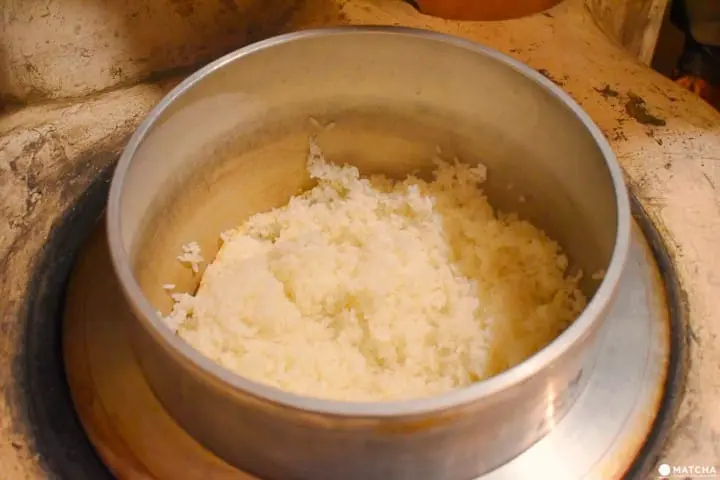
While listening to Kazu-san, white smoke rose from the pot on the kamado, filling the kitchen with a fragrant aroma.
"Looks like the rice is ready, so let's eat."
A Dinner Fit for the Body
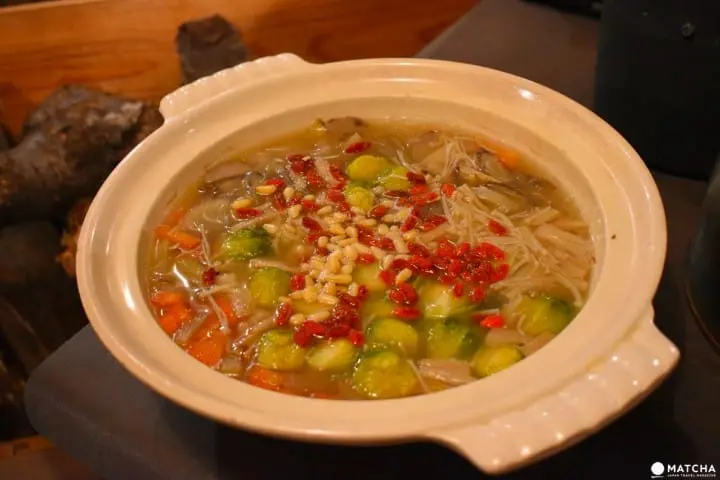

The meals at Watoya consists of vegetarian dishes. They will also prepare vegan dishes as well, with a reservation in advance.

Dinner was made by Kana-san, who live and work on the premises.
Kana-san told us that she tries to use the local vegetables as much as possible. Her dishes are delicious, and you will want to savor every bite.
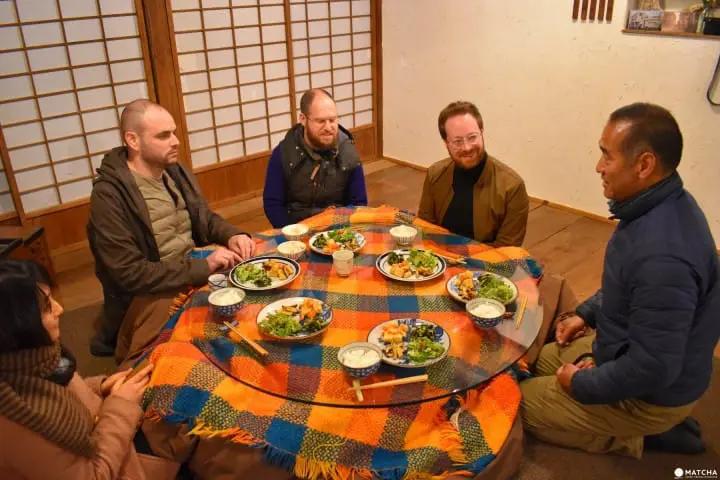
All the guests are gathered for dinner. Along with Kazu-san and the Israeli guests, we talked about the Japanese food culture.
When we finished dinner, the goemon buro was ready.
Prime Time in Goemon Buro
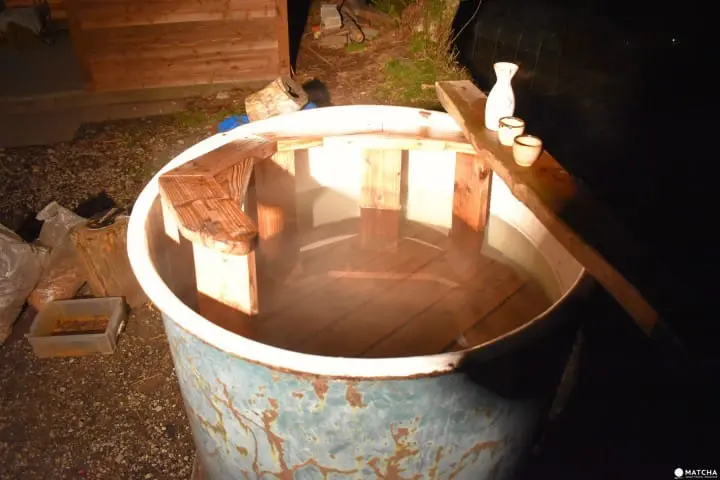
Steam was rising from the goemon buro. It may look shallow, but the bather can push down the floating wooden board inside the tub, and dip their shoulders in hot water.
Some people may wonder if the tub might be hot.
It turned out that the tub was not so hot. The heat goes to the water first, so the tub will get warm only after the water starts boiling.
Bathe in the hot water, taste the Japanese sake, and it will feel like heaven. We tried a brand called Gonin Musume (five maidens), made in Chiba prefecture. Gonin Musume is made from agrochemical-free rice, and has a soft, acerbic taste.
The sound of water, wood popping in the blaze and the croaking of frogs fill the air. Turn the lamp off, and you can view the stars shining brightly.
While being surrounded by sound and scent, you might start to feel the things around you. This is a place to regain your senses.
Time slowed down, and the night wore on.
Kazu-san's Hideaway

Vegetarian dishes, such as miso soup, umeboshi (pickled plum) and natto (fermented soybeans), are served at breakfast. They are all a part of a traditional Japanese breakfast.
After checking out with a full stomach, Kazu-san said, "Let me show you something special."
We got into a car, and Kazu-san told us that the place we are headed is not listed on a guidebook, and he found it on his own.
After a short drive, we walked down a slope, and reached a river.

"Before moving to Otaki-machi, I was looking for a place to build a rice paddy. I found this river during the search, and decided to move here."
This is the spot where Kazu-san made the decision to move to Otaki-machi. It has a small waterfall, along with plum trees.
Kazu-san's rice paddy is also located near the river. The rice served at Watoya is grown here.

Watoya is a hideaway for its guests, and this spot is Kazu-san's own hideaway. The location is not disclosed, so join the canyoning tour, and have Kazu-san show it to you.
"The guests at Watoya will be shown spots that aren't listed on guidebooks. Not just here, but spots that nobody knows, where everybody will be excited. There are many spots like that in this area"
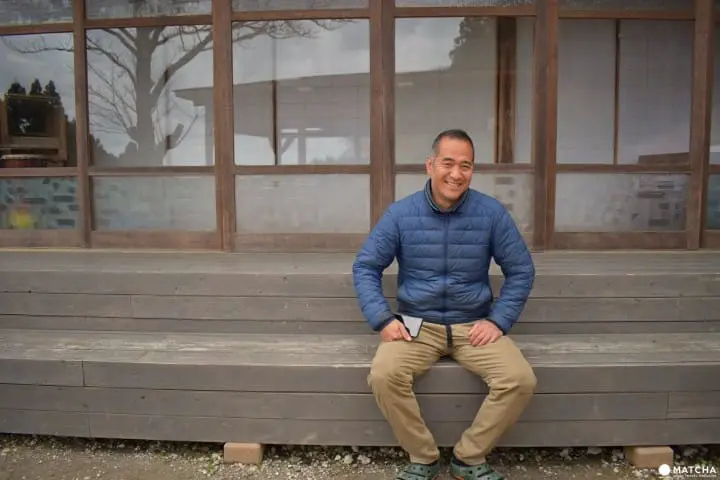
"Ohtaki-machi is blessed with natural environment, which reminds us of a traditional satoyama (a hill where people used to collect firewood and edible wild plants). The people living here benefit from that environment."
On the way back, Kazu-san said, "This area is relatively near Tokyo. So if you're staying in Tokyo, make a quick visit to Otaki-machi. I hope that people from all over the world come here."
"Please visit us again, in summer," Kazu-san said on parting, waving his hand.
Produced in Co-operation with: Old Traditional Guesthouse Watoya.
MATCHA Editer.









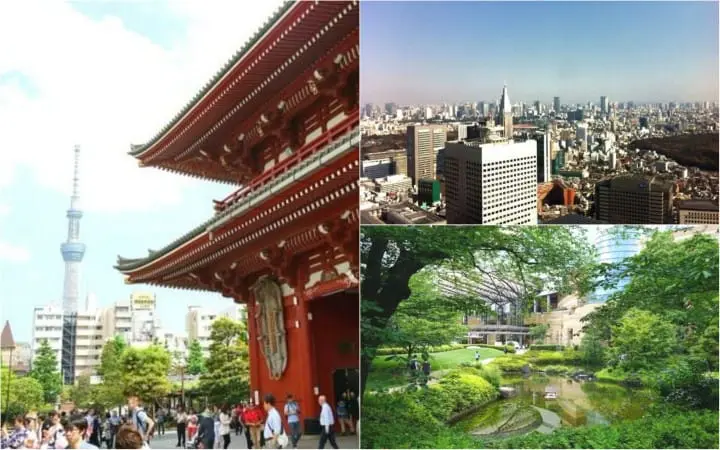



























![[JR KYUSHU HOTEL Blossom Oita] A hotel directly connected to Oita Station - A comprehensive guide to access!](https://resources.matcha-jp.com/resize/720x2000/2025/10/23-247814.webp)
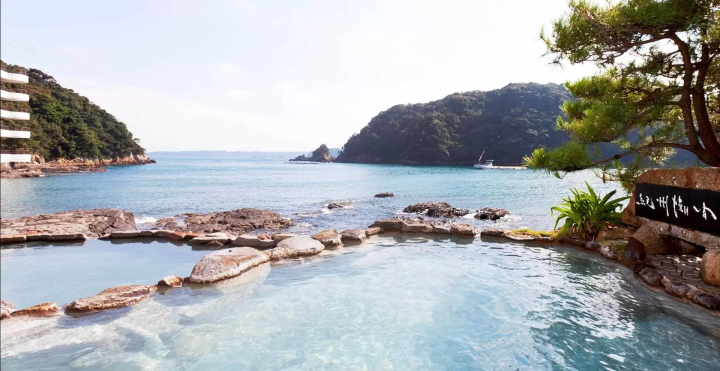
![Deep dive into Japanese brands! A tour of famous leather shoe stores with GENSEI & Nin [Harta Edition]](https://resources.matcha-jp.com/resize/720x2000/2025/12/18-253277.webp)
